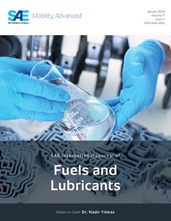Internal deposits formed within the fuel injection system have been widely reported in the literature. Several root causes exist, with many deposits consisting of more than one material. The final chemistry depends on the availability of trace fuel contaminants and additives and to a lesser extent hydrocarbon/FAME stability and operating conditions. The present paper identifies the primary deposit morphologies, along with the typical root cause. Metal carboxylate salts, also known as metal soaps are most widely reported and are easily recreated under controlled conditions using compounds present at trace concentrations in some market fuels. The salting reaction may occur at low temperatures in the fuel supply system. It is proposed that the resulting fuel insoluble salt molecules are transported as reverse micelles, occasionally plugging filters but more commonly passing to the high pressure injection system. The micelles collapse at regions of high temperatures, pressures and shear within the injection system to form unstable polar molecules that absorb to nearby metal surfaces as deposits. Nitrogen containing amide deposits have also been widely reported and were recreated through reaction of low molecular weight components present in some PIB based deposit control additives (DCA). Finally, deposits caused by degradation of the hydrocarbon or FAME base fuel are occasionally reported in some markets. Such deposits were recreated and are strongly sensitive to the combined effects of fuel stability and temperature. The composition of deposits caused by FAME stability are chemically similar to that of post-test residue removed from Rancimat tests.
